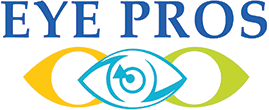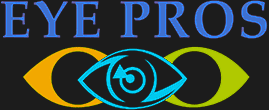Cataracts
Improving Vision by Addressing Cataracts

Understanding Cataracts
Cataracts obstruct the clear focusing of light, leading to blurred vision and difficulties with glare, which can cause symptoms like night blindness, especially when facing oncoming car headlights.
Visualize a Camera
Consider the functioning of your eyes in the same way you would think about the components of a camera. Just like a camera, your eyes have an internal lens that works to focus an image onto a sensitive surface. In the case of a camera, this surface is film—in your eye, it is the retina. The retina can be likened to the camera film as it consists of a delicate layer of light-sensitive cells.
If the lens of a camera were smudged or covered in dirt, the resulting pictures would appear unclear and lacking in detail. Similarly, when the natural crystalline lens in your eye becomes cloudy due to a cataract, the image of the world you perceive becomes blurred and discolored.
Causes and Risk Factors
Cataracts are a common occurrence as a natural part of the aging process. As individuals approach their mid-sixties, it is typical to develop some form of cataract in either one or both eyes. It’s important to note that cataracts do not cause permanent blindness. They are not tumors, diseases, or growths covering the eye’s surface. Rather, they represent a change in the clarity of the natural lens within the eye.
While most individuals who develop cataracts are older, they can occur at any age for various reasons. Some key risk factors include:
- Age: Aging is the primary cause of cataracts.
- Smoking: Smokers are more likely to develop cataracts earlier compared to non-smokers.
- Family History: A family history of cataracts increases your risk.
- Medical Conditions: Diabetes and other systemic diseases can contribute to cataract development.
- Medications: Long-term use of corticosteroids or medications for chronic inflammation can increase the risk.
- Eye Injuries or Surgeries: Previous eye injuries or surgeries can lead to cataracts.
- Laser Vision Correction: Past laser vision correction procedures may be a contributing factor.
Progression and Treatment
The formation of cataracts can take several years or occur rapidly within a few months. While it is possible for cataracts to affect both eyes simultaneously, the progression may differ in each eye, with one eye experiencing a faster development.
Modern Cataract Surgery
In the past, the gradual progression of cataracts was referred to as “ripening.” Surgeons would wait until the cataract was ripe before removing it, which involved a single-piece extraction through a large incision. No replacement lens was inserted during this procedure, resulting in limited visual capabilities where patients could perceive light and hand movements. Eventually, thick and heavy “cataract glasses” were developed, providing individuals with a degree of functionality.
Fortunately, the approach to cataract treatment has significantly evolved. Nowadays, cataract surgery is conducted as soon as a person’s vision is impaired to a degree that hinders their normal functioning. This modern surgical procedure involves:
- A small incision through which the cloudy lens is delicately fragmented and removed from the eye.
- Replacement of the cloudy lens with an artificial lens.
- Option to choose premium lenses that offer advanced features like astigmatism correction, further enhancing visual outcomes.
Cataracts are a common and treatable condition, primarily associated with aging. By understanding the causes, risk factors, and modern treatment options, you can take proactive steps to maintain clear vision and a high quality of life. Regular eye exams and timely cataract surgery can significantly improve your vision and overall eye health.

